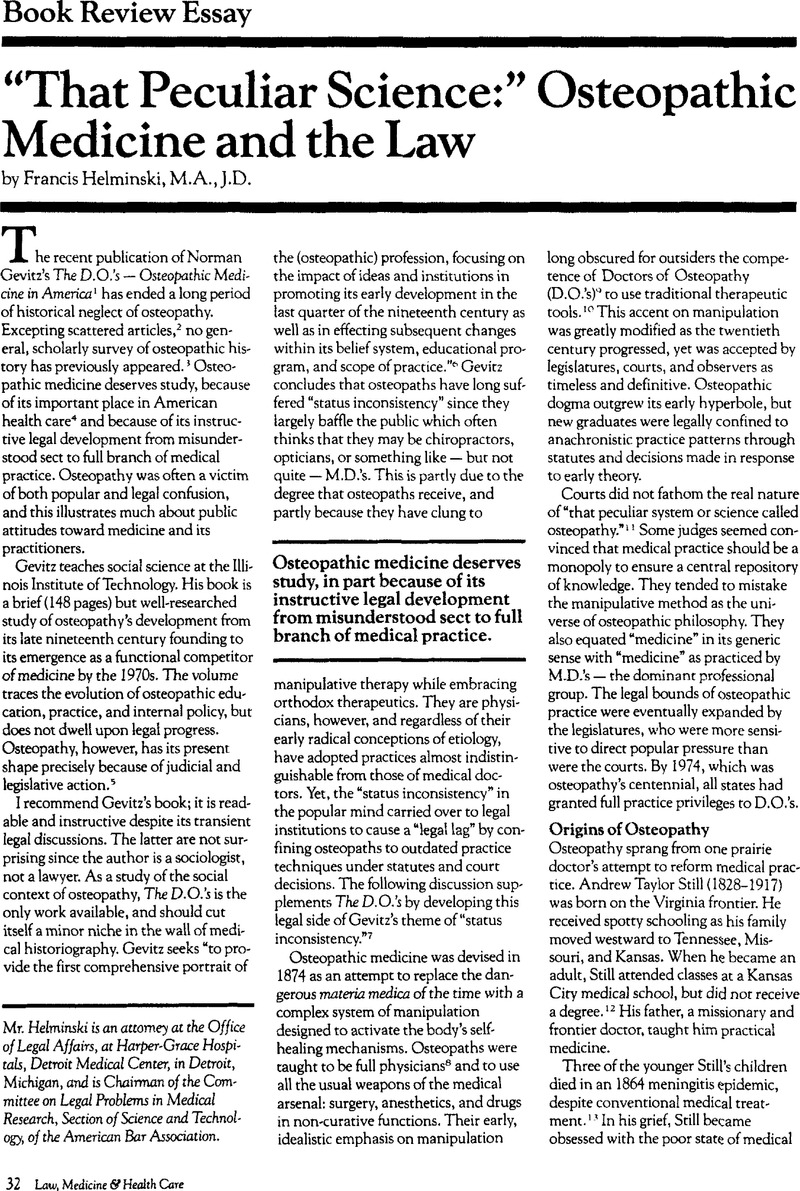Crossref Citations
This article has been cited by the following publications. This list is generated based on data provided by Crossref.
Richards, Edward P.
and
Rathbun, Katharine C.
1986.
Legal Issues in Critical Care Medicine.
Journal of Intensive Care Medicine,
Vol. 1,
Issue. 2,
p.
101.
Peppin, John F.
1993.
The osteopathic distinction: Fact or fancy?.
Journal of Medical Humanities,
Vol. 14,
Issue. 4,
p.
203.





